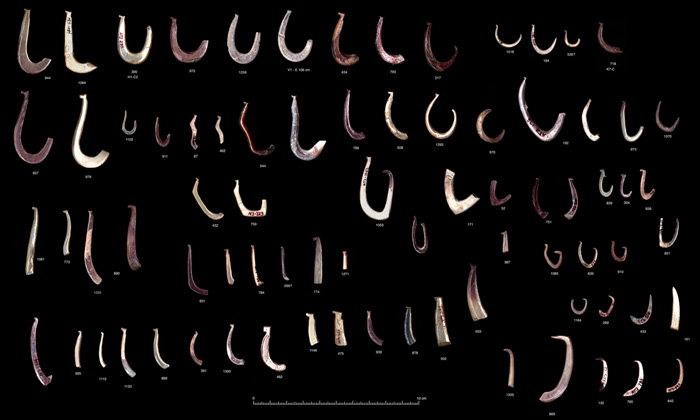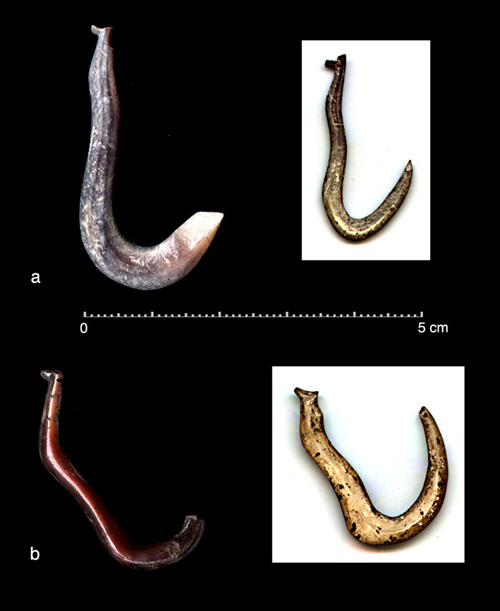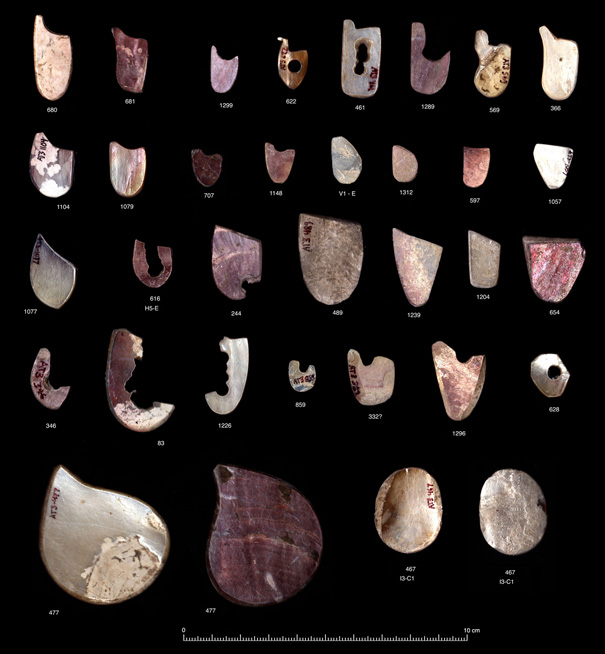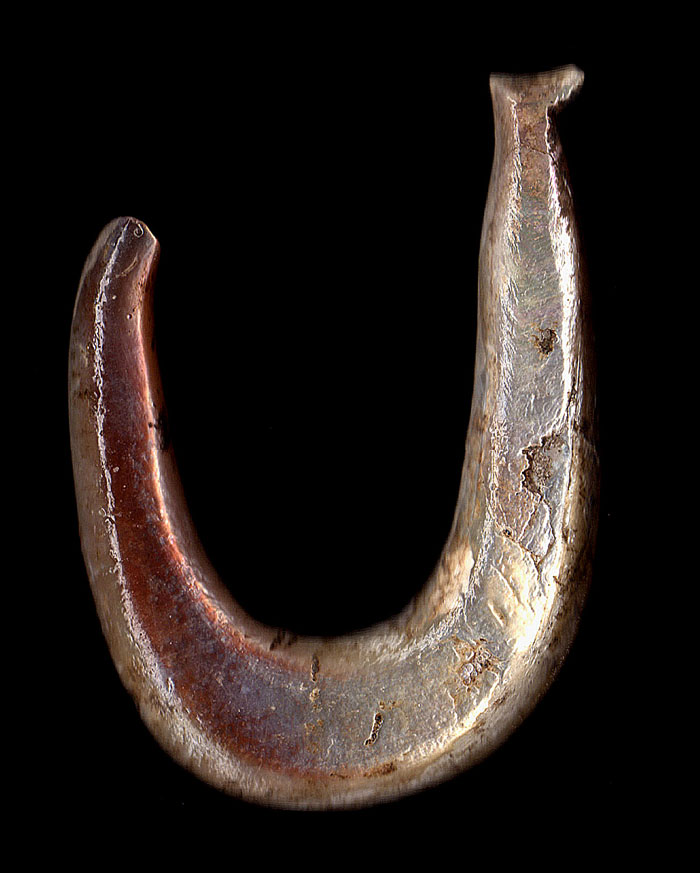

| This is the 'jackpot' that Robert Bollt was hoping to find at ATIAHARA, hundreds of pearl-shell artifacts and many complete fishhooks (click here to see a 300dpi enlargement). It will take some serious comparative study to sort out all these hooks and fragments, heavy shank, wiggly shank, angular shank, reversed shank, just to name a few. Plus there are a few examples that are unique and await classification, such as the 'sqiggly shank'. |

| These examples, all excavated at ATIAHARA, indicate that there are two distinct forms, (a) this form is more vertical in it's stance, as compared with (b) which compares well with Sinoto's example c. and may be considered a true wiggly shank. (there are some who may refer to our example (a) as a 'squiggly shank'). |

| These fishhook blanks are a mine of information, not only do they allow us to reconstruct the original hook forms, but they reveal how the hooks were manufactured, drilled examples as well as partially filed blanks are perhaps more valuable than complete hooks. If you click on the image you go to an enlargement (or here for an even greater enlargement), in the top row, the blank that is second from the right, #569 is a wiggly (or more probably squiggly) shank form and perhaps the first ever documented. Also notice the blank #681 (top row second from the left) this unusual blank my be another example of the fishhook shown at the top of the previous page, which has a similar distinctive angular bend (elbow) and acute recurved point |


| When it comes to studying pearl-shell fishhook line attachment devices, high resolution scans are a must. All the 2007 fishhook material was scanned at 1200dpi. This brings me to an important observation, as concerns the dispersal of knowledge and the study of artifacts such as fishhooks. Modern printing methods, i.e. books, cannot compete with computerized information, to print enlarged images such as the ones above would require pages over a meter wide, (my original image for the collection of the 2007 pearl-shell artifacts would be about 20,000 pixels wide full size.) I love books, and have a large collection, however one must now be aware of their limitations. Today we see illustrations of artifacts rather than photographs due to the fact that illustrations are cheaper to print! This was pointed out to me when I suggested to a friend that photos of adzes are a lot less work than illustrating them. Fortunately we now have the internet and we need not worry about the cost of printing.... ATIAHARA.ORG has room to spare for high resolution images! |
| go to the next page Turbo-shell fishhooks - 2007 |
| Go to Comparative Implementology | go to ATIAHARA.ORG |